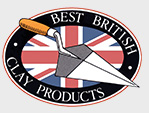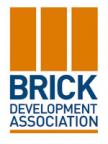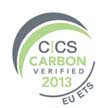Quarry tile blends

The natural clay colours of Ketley Quarry Tiles are obtained through careful control of the kiln atmosphere, where varying degrees of oxidisation of the iron in the clay generate different shades. This process produces a natural clay colour range with random variations that blend together extremely well.
The use of a mixed colour blend of quarry tiles can really lift a space, the rich clay colour bringing warmth and interest.
![]() Frost resistant
Frost resistant
Suitable for exterior & interior
![]() High slip resistance
High slip resistance
Click here for more info
Category R11 C
Case Studies
Barbican


Ketley Quarry tiles are helping to deliver the renovation of the Barbican podium area which began late 2013. As a listed building, the requirements were to maintain the general appearance of the paving while freshening the look of the area and delivering good slip resistance. Over 280,000 quarry tiles in three brindle colours were supplied for the first phase of the restoration. Full details
Passivhaus in Hampshire


This low energy family home was designed by Ruth Butler Architects and features a combination of timber and clay quarry tiles both inside and out. By using quarry tiles throughout, the architect merges the interior with the exterior and she uses a variety of laying patterns to break the paved area into distinct spaces. She comments "We're delighted with the quality of the Ketley quarry tiles, they add a rich colour and texture to our home, linking inside and outside in a seamless way. They are also integral to our vision for a healthy home, with VOC-free finishes and excellent indoor air-quality". Full details
Details
Ketley Quarry Tiles, sometimes known also as paving tiles, brick tiles or clay floor tiles, are available in a range of natural clay colours and offer similar performance to traditional quarry tiles. For restoration projects our Quarry Tiles offer a very good match to the discontinued Hawkins and Dennis Ruabon Quarry tiles which can be found in many parts of the UK. They offer excellent slip resistance and suit most flooring and wall cladding applications indoors or externally, in commercial premises or the home. They can also be used with underfloor heating systems as they are good conductors.
18mm thick, Ketley Quarry tiles are manufactured from the proven Etruria Marl clay, which becomes dense when fired, and is hard wearing and resistant to acids, alkalis, oils, grease and fats. In pendulum tests where anything higher than 36 indicates low slip potential, they score a dry value average of 63 and a wet value average of 55 meaning they have excellent slip resistance in both wet and dry conditions. They can be classified as R11 and Category C which is the highest rating for slip resistance according to BS EN 14411.
Fittings
Quarry Tile Fittings

These products shown here match our rectangular quarry tiles 102mm x 215mm. Similar products are available to match our squares 100mm x 100mm and 150mm x 150mm. Please contact us for further details.
Round Edge Long - KQTREL

Round Edge Short - KQTRES

Double Round Edge - KQTREX

Step Tread - KQTST

Coved Based Round Top - KQTCBRT

Coved Based Round Top External - KQTCBRTX
Eco
Place of Manufacture: Brierley Hill, UK
Environmental Management: 14001 Download Certificate
Quality Management : 9001 Download Certificate
Download the Ketley Quality and Environmental Policy
Life Cycle: BRE Global Certification in accordance with EN 15804:2012 Download Certificate
Energy: Fired in gas kilns to 1130o C
Raw materials: Etruria Marl Clay from our own quarry in Cannock, 12 miles from our factory, and sand
Lifespan: Quarry tiles are long life building products, made using the same clay as our Class A engineering bricks, the toughest bricks you can buy
Recyclability: Mortar can be cleaned off so the tiles can be reused. They can also be crushed and used as aggregate and/or as an inert bulk fill
Packaging: We keep packaging to a minimum using wooden pallets
Find out more about Ketley's approach to sustainability
Click for the Brick Development Association infographic on Sustainability of Brick
See below the latest video about Sustainability of Brick from the Brick Development Association
Tech Spec
Ketley Quarry Tiles for flooring
Standard: BS EN 14411:2012
Ketley Quarry Tiles are manufactured from the same clay, using the same processes as the Ketley 50mm and 65mm pavers and deliver the same technical characteristics of very low water absorption, very high strength and unrivalled frost resistance.
| Quarry Tile | Joint size | Coverage per m2 |
|---|---|---|
| 215x102mm | 10mm | 40 |
| 215x102mm | 6mm | 42 |
| 215x102mm | 5mm | 43 |
| 215x65mm | 10mm | 60 |
| 150x150mm | 10mm | 40 |
Packing On pallets - 1350 pieces on a pallet for 215x102mm size pallet weight (incl pallet) 1240kg
1100 pieces on a pallet for 150x150mm size pallet weight (incl pallet) 1010kg
1890 pieces on a pallet for 215x 65mm size pallet weight (incl pallet) 1155kg
Weight per unit 215x102mm size - 0.9kg 150x150mm size - 0.9kg 215x 65mm size 0.6kg
Download Ketley Quarry Tile Specification Sheet
Download Ketley Quarry Tile Specification clause as a word document
|
Properties |
BS EN 14411 Group A1b requirement |
Typical values for Ketley Quarry tiles |
| DIMENSIONS AND SURFACE QUALITY | ||
|
length x width
215mm x 102mm 215mm x 65mm
100mm x 100mm
150mm x 150mm
|
average tolerance +/-2% to an individual maximum of +/- 4mm
|
length 215mm+/-2.5mm
width 102.5mm+/-1.5mm |
|
Thickness (18mm)
|
average tolerance +/-10%
|
+/-1mm
|
|
Straightness of sides
|
within ± 0.6%
|
0.2%
|
|
Rectangularity
|
within ±1%
|
0.2%
|
|
Surface flatness
|
centre curvature ± 1.5%
|
centre curvature +/-1.5mm
|
|
edge curvature ± 1.5%
|
edge curvature +/- 1mm
|
|
|
warpage ± 1.5%
|
warpage +/- 1.5mm
|
|
|
PHYSICAL PROPERTIES |
||
|
Breaking strength
|
Min 1100N
|
2995N
|
|
Water absorption
|
0.5 < 3%
|
1.5%
|
|
Resistance to deep abrasion
|
Max 275mm³
|
106mm³
|
|
Frost resistance
|
Value to be stated
|
No damage after 100 cycles
|
|
Slip resistance
|
Pendulum test results exceeding 36 indicate low slip potential
|
Dry value av 96
Wet value av of 58
on Slider 55 for Staffs Blue
Dry value av 63
Wet value av of 55
on Slider 96 for Brown Brindle
|
|
Inclined platform in shod conditions |
Category R11 which indicates that they are considered not to be slippery in wet or greasy conditions.
|
|
|
Inclined platform in wet barefoot conditions
|
Category C which is the highest rating for slip resistance.
|
|
|
|
|
|
|
Bond strength
|
C2 Cementatious adhesives
|
>1.0 N/mm²
|
|
Reaction resin adhesives
|
>2.0N/mm²
|
|
|
Mortar
|
0.15N/mm²
|
|
|
Moisture expansion
|
No requirement
|
Negligible
|
|
Reaction to fire
|
Value to be stated
|
A1
|
|
CHEMICAL PROPERTIES
Resistance to staining
|
Minimum requirement 3
|
Paste stain 5
Chemical/oxydising stain 4
Film stain 3
|
|
Chemical Resistance
|
|
NPD
|
Laying
Laying Quarry tiles
Download our guide to laying and cleaning Quarry Tiles
Download Ardex guide to fixing Ketley Quarry Tiles
During the floor laying operation the areas being treated should be accessible to no-one but the floor layers and should not be subjected to traffic until the bedding has stiffened and sufficient bond has developed between the bedding and the tile. The floor should be kept clean and free from cement and plaster droppings.
As a general guide the following fixing should be followed;
- A joint width of between 6 & 10 mm
- A bedding layer to be approximately 6mm for cement based adhesives, 15-25mm for cement mortar and up to 70mm for a semi dry bed.
- A screed would normally be applied with a thickness of 50mm.
- A separating layer may be used to isolate the slips or paving tiles and their bedding from the base, preventing stresses in the base affecting the floor finish. This method is not recommended for exterior applications.
When a screed is applied, the concrete base must be at least 4 weeks old. The screed must then be allowed to mature for at least 2 weeks before fixing commences, during which time it must be protected from rain and frost.
Bedding directly to the base can be used where the base is completely matured and where there is no risk of further shrinkage movement or where a damp-proof membrane is incorporated between the concrete base and screed. This method is suitable for external applications.
Care should be taken to incorporate appropriate falls and movement/expansion joints within the design of structure.
A suitable damp-proof membrane should be incorporated in the construction.
Quarry tiles should only be laid on a rigid bed with no voids underneath so the load applied to them is transferred through to the base. In situations where heavy loads are involved the strength of the installation can be improved by the use of a thicker paver as the transverse breaking load of a clay paving product is directly related to its thickness where all other factors are equal. It is advisable to select the material to resist the most arduous conditions likely to be imposed during the life of the product.
Grouting
Grouting of quarry tiles laid with wet cement-sand mortars or adhesives should not be carried out for 12 hours after laying the quarry tiles. Where a semi-dry mix method is used, tiles should be grouted within 4 hours of laying to ensure a full bond between the grout and the bedding.
Board should be laid over the tiled area to spread the load of the tiler when carrying out the grouting operation. The grouting mortar should be adapted for the width of the joint with a lower ratio of cement for wider joints. A mixture of 1:1 cement to fine dry sand by volume mixed to a paste with only the minimum of water for workability, should be used for joints of less that 3mm and a ratio of 1:3 for joints wider than 6mm. Avoid too wet a mix, as this will dry out rapidly and the grouting will crack and break out. Work in the grout in small joints with a squeegee action. In wider joints pointing is recommended. After the joints have been filled, scatter a dry 1:3 or 4 mortar mix over the joints: allow to dry for about 5 to 10 minutes, then brush away excess loose material with a soft bristle brush. Finally clean off the tiles with water and a cloth, avoid excess watering of the tiles in this operation.
If an impervious joint is required, additives may be used in the grout mix or proprietary ready grouts can be used. However advice should be sought from the manufacturers as to their suitability for the application. Attention should be paid to cleaning any proprietary grout or grouts mixed with additives off the surface of the Quarry tiles immediately.
Tiles should be cleaned as work proceeds. Such cleaning should be minimal with good workmanship.
For further information on fixing products and their suitability for your project please refer to the manufacturers listed below.
Instarmac www.instarmac.co.uk They supply a fully BS7533 compliant Ultrascape’s Mortar Paving System developed for constructing rigid paved areas offering a minimum construction life of 40 years. Relevant case studies, data sheets and COSH information can be downloaded from their website.
Cleaning
Cleaning and Maintenance
Download our guide to laying and cleaning Quarry Tiles
Under normal circumstances Quarry Tiles require little maintenance and can be kept clean by sweeping then washing with warm water to which a suitable non-soapy detergent has been added.
Clean and dry flooring surfaces possess a low slip potential, the majority of slip accidents occur in the presence of a contamination between the floor surface and foot. The likelihood of a slip occurring is greatly reduced if contamination is controlled by means of a cleaning and maintenance procedure. In order for a cleaning and/or maintenance regime to be effective there are a number of basic elements that should be considered:
-
Before establishing a floor cleaning protocol, the specific contaminants must be identified in order to enable the selection of the appropriate cleaning agent
-
The cleaning tools provided should be appropriate for use with the floor in question it may be necessary to assign dedicated tools for specific areas
-
Regular cleaning of the floor should be scheduled, specifying the responsible person and time of day or night (dependent on likely volume of pedestrian traffic) cleaning should take place
-
Clear instruction should be provided as to the cleaning requirements and procedures, correct use and disposal of detergents, emergency conditions and procedures and recording and reporting of maintenance operations
-
Wear, damage, debris and contaminants should be identified through routine inspection of floor surfaces.
Contamination cleansing routines are dependent upon a number of factors including the type of surface to be cleaned, the contamination present, the availability of chemical cleaning agents and the practicality of manoeuvring cleaning machinery in the given space. Beyond the method used, it is imperative to ensure all contaminates are removed following the cleansing process The freshly cleaned floor must be thoroughly rinsed with clean water to make certain that all cleaning agents are removed and the floor is dry on completion. Failure to conduct these last actions can lead to a build-up of concentrated contaminate and cleaning agent on the surface of floors. These contaminant and cleaning agent residues will combine with any water subsequently applied to form an emulsion that can spread over the floor’s surface, significantly increasing the slip potential.
Quarry Tiles should require only a small amount of cleaning on completion, and this only when the joints are hard. This should be done with a non-soapy, neutral, sulphate-free detergent and cleaned off with clean water. Strong detergents should not be used as they can cause scumming. Always damp tiles before applying a cleaning agent to avoid the cleaner being drawn into the body of the tile: the cleaning treatment is then restricted to the surface of the tile.
Difficult stains can be removed in one of three ways;
-
By the use of an abrasive soap. Steel wool should not be used as small particles ma be deposited in the grouting causing rust marks
-
By chemical means, by reaction with the appropriate solvent but due to the variety of materials that may cause staining it is recommended that advice is sought from organisations such as Lucideon in Stoke on Trent.
-
By bleaching to remove the colour from the stain, although this should not be done on a regular basis.
NB: The use of sealers and polishes on Quarry Tiles can make regular cleaning more difficult.



















